| Cisco Aironet 1810W Series Access Points |
| Model Number |
AIR-AP1810W-B-K9 |
| Product Description |
Dual-band, controller-based 802.11a/g/n/ac, Wave 2 |
| Specifications |
| Authentication and security |
- Advanced Encryption Standard (AES) for Wi-Fi Protected Access 2 (WPA2)
- 802.1X, RADIUS authentication, authorization and accounting (AAA)
- 802.11i
|
| Software |
Cisco Unified Wireless Network Software with AireOS Wireless Controllers Release 8.2.111.0 or later |
| Maximum clients |
Maximum number of associated wireless clients: 200 per Wi-Fi radio, in total 400 clients per access point |
| 802.11ac |
- 2×2 single-user/multiuser MIMO with two spatial streams
- Maximal ratio combining (MRC)
- 20-, 40- and 80-MHz channels
- PHY data rates up to 866.7 Mbps (80 MHz on 5 GHz)
- Packet aggregation: A-MPDU (Tx/Rx), A-MSDU (Rx)
- 802.11 Dynamic Frequency Selection (DFS)
- Cyclic shift diversity (CSD) support
|
| Ethernet ports |
- Authentication with 802.1X or MAC filtered
- Dynamic VLAN or per port
- Traffic locally switched or tunneled back to wireless LAN controller
- 802.11n data rates on 2.4 GHz
- 802.11ac data rates on 5 GHz
|
| Bluetooth (future availability) |
- Integrated Bluetooth 4.1 (including BLE) radio
- Maximum transmit power: 5 dBm
- Antenna gain: 2 dBi
|
| Data rates supported |
- 802.11a 6, 9, 12, 18, 24, 36, 48, 54 Mbps
- 802.11b/g 1, 2, 5.5, 6, 9, 11, 12, 18, 24, 36, 48, 54 Mbps
|
| Frequency band and 20- MHz operating channels (regulatory domains) |
A (A regulatory domain):
- 2.412 to 2.462 GHz; 11 channels
- 5.180 to 5.320 GHz; 8 channels
- 5.500 to 5.700 GHz; 8 channels (excludes 5.600 to 5.640 GHz)
- 5.745 to 5.825 GHz; 5 channels
B (B regulatory domain):
- 2.412 to 2.462 GHz; 11 channels
- 5.180 to 5.320 GHz; 8 channels
- 5.500 to 5.720 GHz; 12 channels
- 5.745 to 5.825 GHz; 5 channels
C (C regulatory domain):
- 2.412 to 2.472 GHz; 13 channels
- 5.745 to 5.825 GHz; 5 channels
D (D regulatory domain):
- 2.412 to 2.462 GHz; 11 channels
- 5.180 to 5.320 GHz; 8 channels
- 5.745 to 5.825 GHz; 5 channels
E (E regulatory domain):
- 2.412 to 2.472 GHz; 13 channels
- 5.180 to 5.320 GHz; 8 channels
- 5.500 to 5.700 GHz; 8 channels (excludes 5.600 to 5.640 GHz)
F (F regulatory domain):
- 2.412 to 2.472 GHz; 13 channels
- 5.745 to 5.805 GHz; 4 channels
G (G regulatory domain):
- 2.412 to 2.472 GHz; 13 channels
- 5.745 to 5.825 GHz; 5 channels
H (H regulatory domain):
- 2.412 to 2.472 GHz; 13 channels
- 5.150 to 5.350 GHz; 8 channels
- 5.745 to 5.825 GHz; 5 channels
I (I regulatory domain):
- 2.412 to 2.472 GHz; 13 channels
- 5.180 to 5.320 GHz; 8 channels
K (K regulatory domain):
- 2.412 to 2.472 GHz; 13 channels
- 5.180 to 5.320 GHz; 8 channels
- 5.500 to 5.620 GHz; 7 channels
- 5.745 to 5.805 GHz; 4 channels
N (N regulatory domain):
- 2.412 to 2.462 GHz; 11 channels
- 5.180 to 5.320 GHz; 8 channels
- 5.745 to 5.825 GHz; 5 channels
Q (Q regulatory domain):
- 2.412 to 2.472 GHz; 13 channels
- 5.180 to 5.320 GHz; 8 channels
- 5.745 to 5.825 GHz; 5 channels
R (R regulatory domain):
- 2.412 to 2.472 GHz; 13 channels
- 5.180 to 5.320 GHz; 8 channels
- 5.660 to 5.805 GHz; 7 channels
S (S regulatory domain):
- 2.412 to 2.472 GHz; 13 channels
- 5.180 to 5.320 GHz; 8 channels
- 5.500 to 5.700 GHz; 11 channels
- 5.745 to 5.825 GHz; 5 channels
T (T regulatory domain):
- 2.412 to 2.462 GHz; 11 channels
- 5.280 to 5.320 GHz; 3 channels
- 5.500 to 5.700 GHz; 8 channels (excludes 5.600 to 5.640 GHz)
- 5.745 to 5.825 GHz; 5 channels
Z (Z regulatory domain):
- 2.412 to 2.462 GHz; 11 channels
- 5.180 to 5.320 GHz; 8 channels
- 5.500 to 5.700 GHz; 8 channels (excludes 5.600 to 5.640 GHz)
- 5.745 to 5.825 GHz; 5 channels
|
| Receive sensitivity (combined sensitivity) |
802.11b
- 99 dBm @ 1 Mbps
- 96 dBm @ 2 Mbps
- 93 dBm @ 5.5 Mbps
- 86 dBm @ 11 Mbps
802.11g
- 94 dBm @ 6 Mbps
- 93 dBm @ 9 Mbps
- 92 dBm @ 12 Mbps
- 90 dBm @ 18 Mbps
- 86 dBm @ 24 Mbps
- 83 dBm @ 36 Mbps
- 78 dBm @ 48 Mbps
- 77 dBm @ 54 Mbps
802.11a
- 94 dBm @ 6 Mbps
- 93 dBm @ 9 Mbps
- 91 dBm @ 12 Mbps
- 89 dBm @ 18 Mbps
- 86 dBm @ 24 Mbps
- 83 dBm @ 36 Mbps
- 78 dBm @ 48 Mbps
- 76 dBm @ 54 Mbps
2.4 GHz
802.11n (HT20)
- 93 dBm @ MCS0
- 90 dBm @ MCS1
- 88 dBm @ MCS2
- 84 dBm @ MCS3
- 81 dBm @ MCS4
- 76 dBm @ MCS5
- 75 dBm @ MCS6
- 74 dBm @ MCS7
- 92 dBm @ MCS8
- 89 dBm @ MCS9
- 87 dBm @ MCS10
- 83 dBm @ MCS11
- 79 dBm @ MCS12
- 76 dBm @ MCS13
- 74 dBm @ MCS14
- 73 dBm @ MCS15
5 GHz
802.11n (HT20)
- 93 dBm @ MCS0
- 90 dBm @ MCS1
- 88 dBm @ MCS2
- 84 dBm @ MCS3
- 81 dBm @ MCS4
- 76 dBm @ MCS5
- 75 dBm @ MCS6
- 73 dBm @ MCS7
- 92 dBm @ MCS8
- 89 dBm @ MCS9
- 86 dBm @ MCS10
- 83 dBm @ MCS11
- 80 dBm @ MCS12
- 75 dBm @ MCS13
- 74 dBm @ MCS14
- 73 dBm @ MCS15
5 GHz
802.11n (HT40)
- 90 dBm @ MCS0
- 87 dBm @ MCS1
- 85 dBm @ MCS2
- 81 dBm @ MCS3
- 78 dBm @ MCS4
- 74 dBm @ MCS5
- 72 dBm @ MCS6
- 71 dBm @ MCS7
- 90 dBm @ MCS8
- 86 dBm @ MCS9
- 84 dBm @ MCS10
- 81 dBm @ MCS11
- 78 dBm @ MCS12
- 73 dBm @ MCS13
- 72 dBm @ MCS14
- 70 dBm @ MCS15
802.11ac (non HT80)
- 88 dBm @ 6 Mbps
- 70 dBm @ 54 Mbps
|
| Maximum transmit power |
- 2.4 GHz:
802.11b
- 17 dBm with 1 antenna
802.11g
802.11n (HT20)
5 GHz
802.11a
802.11n non-HT duplicate mode
802.11n (HT20)
802.11n (HT40)
802.11ac
- Non-HT80: 20 dBm with 2 antennas
- VHT20: 20 dBm with 2 antennas
- VHT40: 20 dBm with 2 antennas
- VHT80: 20 dBm, 2 antennas
- VHT20-STBC: 20 dBm with 2 antennas
- VHT40-STBC: 20 dBm with 2 antennas
- VHT80-STBC: 20 dBm with 2 antennas
|
| Available transmit power settings |
2.4 GHz17 dBm (50 mW)
- 14 dBm (25 mW)
- 11 dBm (12.5 mW)
- 8 dBm (6.25 mW)
- 5 dBm (3.13 mW)
- 2 dBm (1.56 mW)
- -1 dBm (0.78 mW)
5 GHz
- 20 dBm (100 mW)
- 17 dBm (50 mW)
- 14 dBm (25 mW)
- 11 dBm (12.5 mW)
- 8 dBm (6.25 mW)
- 5 dBm (3.13 mW)
- 2 dBm (1.56 mW)
- -1 dBm (0.78mW)
|
| Integrated antennas |
- 2.4 GHz, gain 2 dBi
- 5 GHz, gain 4 dBi
|
| Interfaces |
- One 10/100/1000BASE-T PoE uplink port
- Management console port (RJ-45)
- Three 10/100/1000BASE-T ports (local Ethernet ports), including one PoE out port: PoE out provides 802.3af when access point is powered by Cisco local power supply (AIR-PWR-C=, AIR-PWR-D=), or ~6.5W when powered by 802.3at, or no output when powered by 802.3af
- One passive pass-through port RJ-45 (back to bottom)
- DC power connector
|
| Indicators |
- Status LED indicates boot loader status, association status, operating status, boot loader warnings, boot loader errors
- Per-port status for local Ethernet ports
- For privacy, LEDs are automatically turned off when the access point joins a controller. LEDs may be enabled to be administratively – see configuration guide.
|
| Dimensions (W x L x H) |
Access point (without mounting bracket): 6.5 x 4.5 x 1.6 in. (165 x 114 x 41 mm) |
| Weight |
Access point without mounting bracket or any other accessories: 1.2 lb (560 g) |
| Environmental |
- Nonoperating (storage) temperature: -22° to 158°F (-30° to 70°C)
- Nonoperating (storage) maximum altitude: 25°C, 15,000 ft (4,500m)
- Operating temperature: 32° to 104°F (0° to 40°C)
- Operating humidity: 10% to 90% percent (noncondensing)
- Operating maximum altitude: 40°C, 9843 ft (3,000m)
|
| System |
- 512 MB DRAM
- 256 MB flash
- 1.4 GHz system dual-core CPU
|
| Input power requirements |
- 44 to 57V DC
- Optional power supply and power injector: 100 to 240V AC; 49 to 60 Hz
|
| Powering options |
- 802.3af/at Ethernet switch
- Optional Cisco power injectors (AIR-PWRINJ5=, AIR-PWRINJ6=)
- Optional Cisco local power supply (AIR-PWR-C= or AIR-PWR-D=)
|
| Power draw |
- Maximum values: 12.95W (15.4W with 100m of cable) with no PoE out, 20.7W (22W with 100m of cable) with 6.49W PoE out and 27.65W with 12.95W PoE out (when powered using AIR-PWR-C or AIR-PWR-D)
Note: When deployed using PoE, the power draw numbers listed above include the power loss in 100m of cabling on the uplink port and 100m of cabling on the PoE out port. |
| Physical security |
- Torx security screw, included with the access point
- Kensington security slot
|
| Mounting |
Included with the access point: mounting bracket AIR-AP-BRACKET-W2, compatible to install to single gang junction box or multiple international standards
Optional:
- AIR-AP1810W-KIT=, spacer kit to mount the access point directly on a wall where standard junction boxes are not available
- AIR-OEAP1810-CRD=, cradle kit to mount the access point on a desk
|
| Accessories |
- Mounting bracket: AIR-AP-BRACKET-W2= (available as spare)
- Spacer kit: AIR-AP1810W-KIT= (sold separately), includes spacer and RJ-45 jumper cable
- Cradle kit: AIR-OEAP1810-CRD= (sold separately), includes back cover and RJ-45 jumper cable
- Physical security kit: AIR-SEC-50= (sold separately), with 50 pcs. security screws used to secure the access point onto wall-mounting bracket, 50 pcs. RJ-45 caps and 2 pcs. unlock keys used to block physical access to Ethernet ports
- Cisco local power supply: AIR-PWR-D= (sold separately)
|
| Compliance |
Safety:
- UL 60950-1
- CAN/CSA-C22.2 No. 60950-1
- UL 2043
- IEC 60950-1
- EN 60950-1
Radio approvals:
- FCC Part 15.247, 15.407
- RSS-247 (Canada)
- EN 300.328, EN 301.893 (Europe)
- ARIB-STD 66 (Japan)
- ARIB-STD T71 (Japan)
- EMI and susceptibility (Class B)
- FCC Part 15.107 and 15.109
- ICES-003 (Canada)
- VCCI (Japan)
- EN 301.489-1 and -17 (Europe)
IEEE standards:
- IEEE 802.11a/b/g, 802.11n, 802.11h, 802.11d
- IEEE 802.11ac Draft 5
Security:
- 802.11i, WPA2, WPA
- 802.1X
- AES
Extensible Authentication Protocol (EAP) types:
- EAP-Transport Layer Security (TLS)
- EAP-Tunneled TLS (TTLS) or Microsoft Challenge Handshake Authentication Protocol Version 2 (MSCHAPv2)
- Protected EAP (PEAP) v0 or EAP-MSCHAPv2
- EAP-Flexible Authentication via Secure Tunneling (FAST)
- PEAP v1 or EAP-Generic Token Card (GTC)
- EAP-Subscriber Identity Module (SIM)
Multimedia:
Other:
- FCC Bulletin OET-65C
- RSS-102
|
 ASUS 20” LED VS207
1 × AED499.00
ASUS 20” LED VS207
1 × AED499.00  HP C4151A Magenta Cartridge for CLJ 8500 / 8550 series
1 × AED699.00
HP C4151A Magenta Cartridge for CLJ 8500 / 8550 series
1 × AED699.00  Dell S2440L 24 inch Widescreen LED Monitor (1920x1080, VGA, HDMI, 16:9, 5000:1, 6ms)
1 × AED879.00
Dell S2440L 24 inch Widescreen LED Monitor (1920x1080, VGA, HDMI, 16:9, 5000:1, 6ms)
1 × AED879.00  16-Port 10/100/1000 Gigabit Switch with Web View and SNMP
1 × AED1,499.00
16-Port 10/100/1000 Gigabit Switch with Web View and SNMP
1 × AED1,499.00  DLT Tape Dell 09W080 9W080 - DLTIV Tape, DLT IV, TK88, 20/40/70/80GB, DLT4000, DLT7000, DLT8000, DLT1 and VS80 Data Cartridge -- On Sale
1 × AED199.00
DLT Tape Dell 09W080 9W080 - DLTIV Tape, DLT IV, TK88, 20/40/70/80GB, DLT4000, DLT7000, DLT8000, DLT1 and VS80 Data Cartridge -- On Sale
1 × AED199.00  FG-100EF - Fortinet NGFW Middle-range Series FortiGate 100EF
1 × AED12,499.00
FG-100EF - Fortinet NGFW Middle-range Series FortiGate 100EF
1 × AED12,499.00  SYMMETRA PX 40KW FRAME, 208V – SYCF40KF
1 × AED67,699.00
SYMMETRA PX 40KW FRAME, 208V – SYCF40KF
1 × AED67,699.00 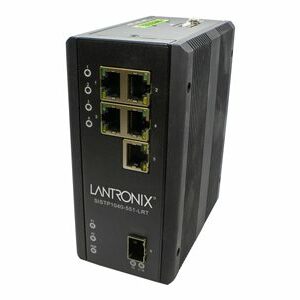 Transition Networks SISTP1040-551-LRT - switch - unmanaged
1 × AED3,299.00
Transition Networks SISTP1040-551-LRT - switch - unmanaged
1 × AED3,299.00 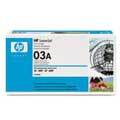 HP C3903A Black Print Cartridge for HP LJ 6P 6MP series
1 × AED329.00
HP C3903A Black Print Cartridge for HP LJ 6P 6MP series
1 × AED329.00 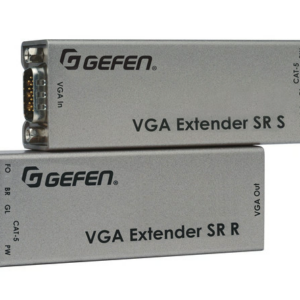 Gefen VGA Extender SRN
1 × AED799.99
Gefen VGA Extender SRN
1 × AED799.99  Ubiquiti Unifi AP Long Range - wireless access point UAP-LR(US)
1 × AED599.00
Ubiquiti Unifi AP Long Range - wireless access point UAP-LR(US)
1 × AED599.00  04 3550600
04 3550600 052 7036860
052 7036860


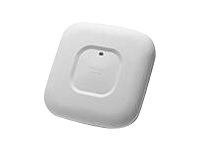

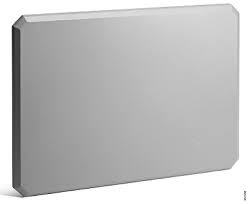

There are no reviews yet.